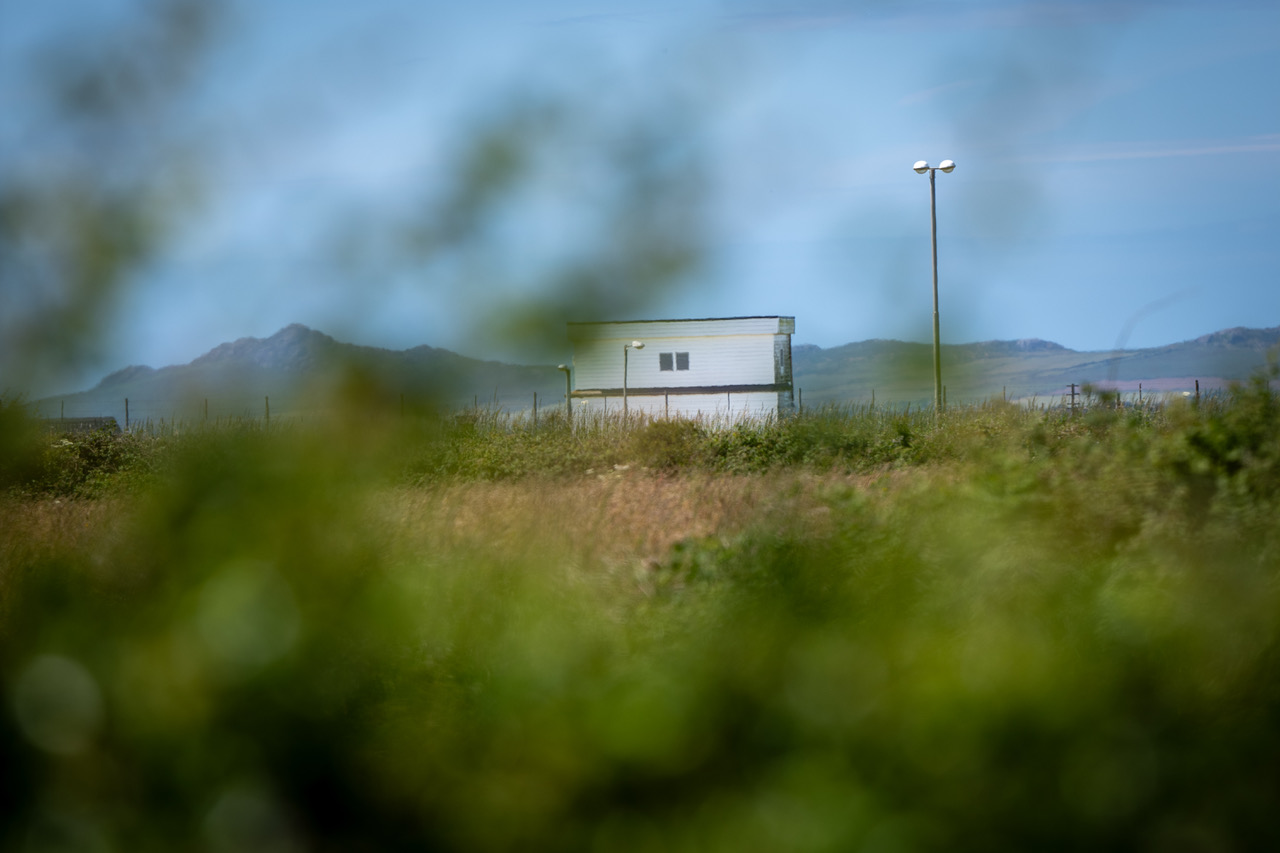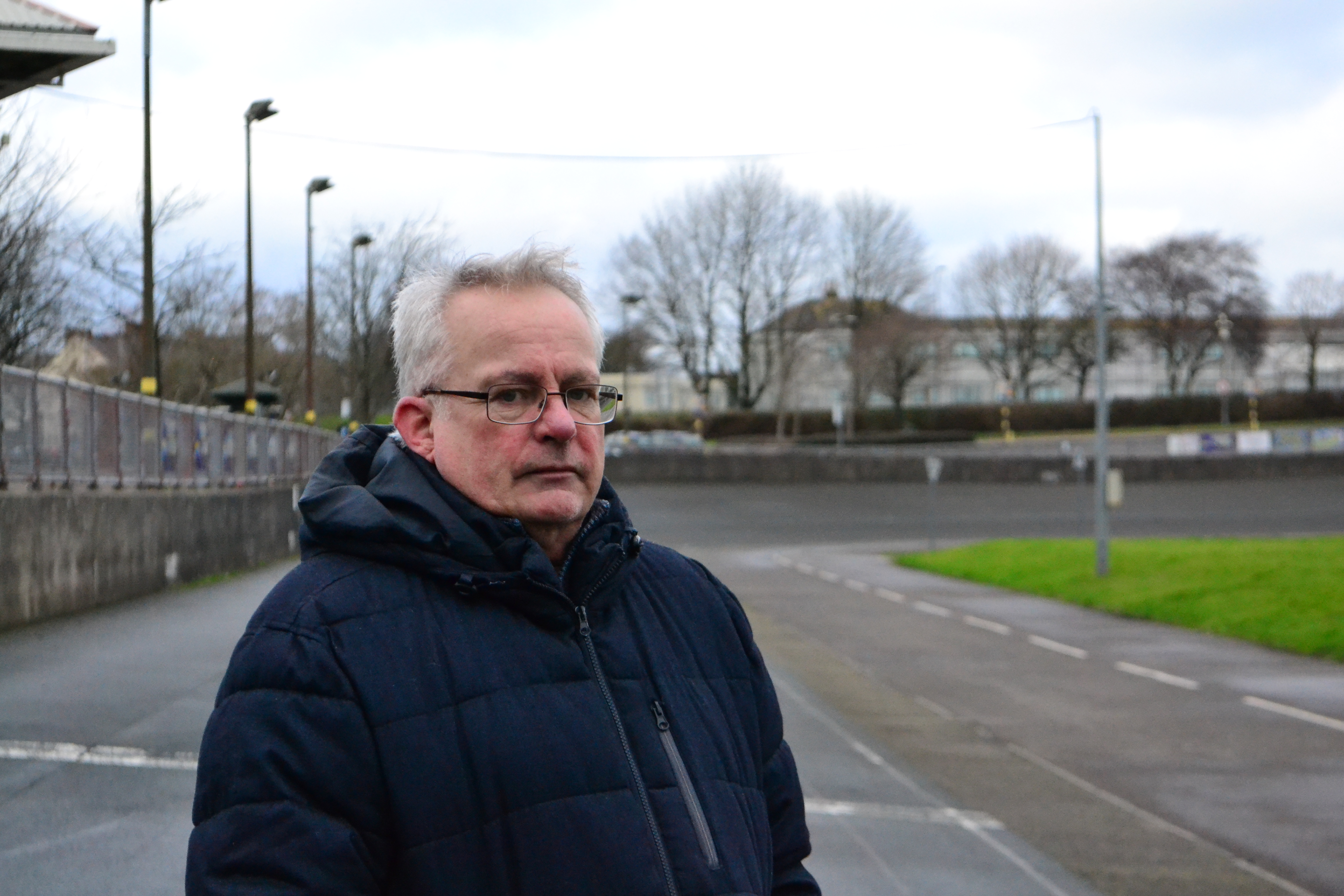
“It Should Be Cherished, Not Destroyed” – Maindy Velodrome & The Battle To Save Cardiff’s Sporting Heritage
For the majority of the past two years, a corner of Cardiff has been home to a fight over the survival of a valued community asset: a large cycling velodrome that has been a feature of the landscape for the best part of a century. As locals campaign to save it from destruction, SC Cook spoke to them about why it matters and what their battle says about the future of public sports facilities.
Words and images by SC Cook
Andrew Wyatt surveys the large grey cycle track beneath us as it curls round to form a neat oblong of sloping sides.
“My daughter learned to ride a bike on here,” he says, as if stating an obvious fact. “It was the normal scenario. Wouldn’t listen to Mum and Dad, came down here with the coach… stabilisers off and was cycling within about 30 seconds.”
Andrew, pictured, main, has lived and breathed this space for 54 years, watching his children and others use the Maindy Velodrome just as he did before them. We slowly walk around the outside of the track as he steadily tells me the significance of the site.
“For anybody who’s an older Cardiffian,” he recalls. “They will remember sports days, sports competitions when it was Maindy stadium.”
Andrew, now in his mid-fifties, tries to sum up the importance of this large, bowl-shaped area of track and field that lies almost hidden in between the Cathays and Heath area of Cardiff.
“You know,” he says purposefully, trying to get across his point, “the likes of Colin Jackson used to train here, Nigel Walker used to train here.”
The mention of two of Wales’ greatest athletes as alumni of the Velodrome should be enough to cement its future, and that’s before you even get to the fact that Welsh Tour de France winner Geraint Thomas used to train here.
But Andrew is all too aware that the history of this place remains largely unknown, and even disregarded by those in power as they threaten to close it down forever.
“It’s got an athletics pedigree,” he explains. “And really, to my knowledge, it’s the last surviving legacy of when Cardiff hosted the Commonwealth Games, or the Empire and Commonwealth Games as it was then. It’s the last bit of sporting heritage from those games. Everything else has gone.”
The sense of loss when it comes to cherished sports facilities is palpable.
“I can remember two swimming pools in the centre of Cardiff, Guilford crescent and the Empire pool,” Andrew recalls, “I can remember an open air swimming pool in Llandaff fields. And I can remember the pool in the international sports centre. They’ve all gone.”
Now the Maindy Velodrome too risks joining this list of sporting heritage that exists only as memory and nostalgia, filling up the image reels of Facebook pages dedicated to the Cardiff of old.
As I arrive to meet Andrew, it’s hard not to think that the Velodrome feels almost out of place in the urban sprawl of buildings, roads and, bizarrely, an army barracks nearby. It sits proudly in the landscape though, a unique facility that unlike much of the surrounding area, is a genuinely public space.
The history of the Velodrome goes back over a hundred years, when the Marquess of Bute in effect gave the site to the residents of Cardiff on the condition that it was used for outdoor leisure and activities.
Back then, it looked very different. The higher section initially had sports courts and bowling greens built on it, but the lower area where the Velodrome now sits was a clay pit.
“It was a bit of an isor and a danger,” Andrew informs me. “People used to drown in it, there was rubbish dumped in it.”
The pit was eventually filled in and became a running track and velodrome, and the site hosted the cycling element of the Empire and Commonwealth Games, hosted by Cardiff in 1958. The original field track for the games was later transferred to the Velodrome and it was home to an entire stadium.
“Cardiff Council failed to maintain what was Maindy stadium and they knocked down the stands and covered over the track,” Andrew tells me. “But there was a campaign to save the Velodrome then and they managed to retain it, but they’ve now come back again to try and get rid of it.”
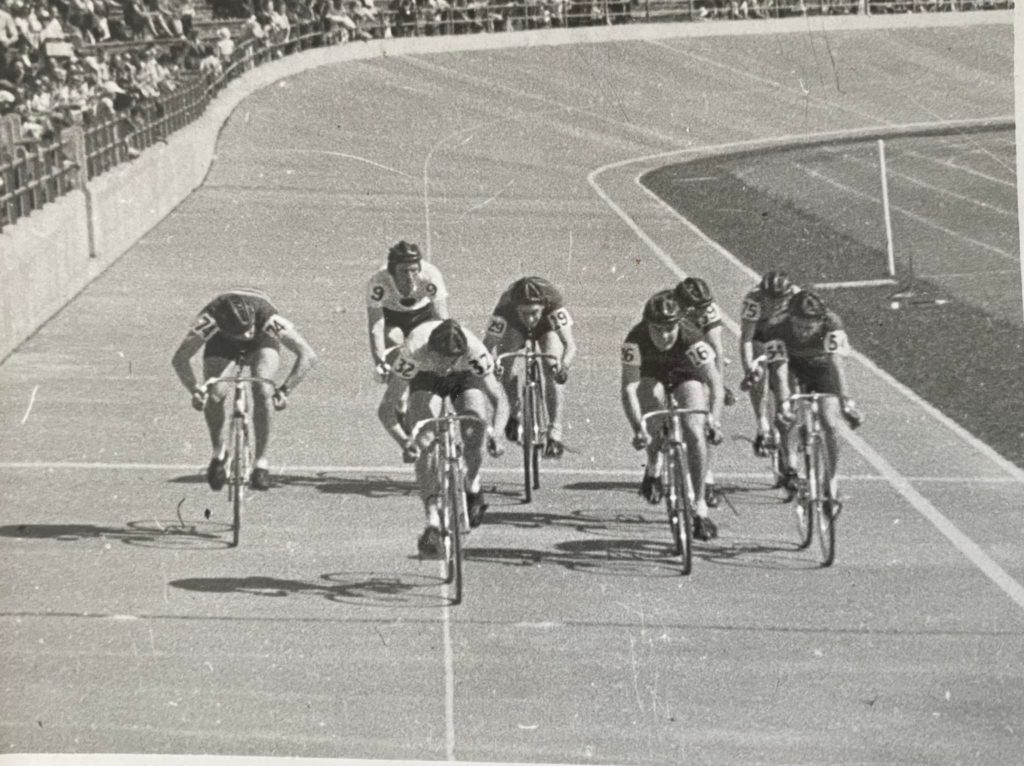
Today the Velodrome is still widely used, mainly for cycling through renowned clubs like the Maindy Flyers. But it’s also used for all sorts of activities, big or small. On the day I meet Andrew, a woman is taking her child around the track on his scooter.
In December 2020, news first emerged that the neighbouring Cathays High School was to be re-built and take in around 400 more pupils.
The site of the Velodrome, which although run by the council is still protected as land given to the people of Cardiff, is to be taken over and used in part to house the new school’s facilities.
When locals became properly aware of the plans last year, the Save Maindy Velodrome campaign was set up and quickly attracted huge amounts of public support.
Thousands have signed a petition to halt its closure and cycling greats such as Geraint Thomas and Chris Hoy have even backed locals trying to save it.
The council have promised that the Velodrome will be replaced with a new track in the proposed International Sports Village in Cardiff Bay, but campaigners say that this is an entirely different proposition.
“This is a grassroots facility,” Andrew says of the Velodrome. “This is a community facility open to all which is going to be replaced by an elite facility in the sports village.”
He explains that the new velodrome’s sides will be steeper, meaning that it will exclude all but the most confident of track cyclists. The council says the decisions was made after consulting cycling specialists, and that “it is intended that the Velodrome will continue to provide opportunity for cycling at all levels.”
But on top of these issues is its location in an area of Cardiff that’s generally hostile to any form of transport other than cars, seemingly confirmed by the plans to build new car parking provision alongside the new velodrome.
When a consultation was held over these plans, which included the demolition of the Maindy Velodrome, it showed that whilst a third of current Velodrome users drive to the site now, that would jump to two thirds if moved to the bay.
“It’s not going to be a community facility, it’s going to be a specialist facility,” says Andrew.
The fear is that it will be the children from the poorest and most disadvantaged backgrounds who will stop having access to this cycling facility, pushing the sport even more towards those with money and resources. What was once free will be lost, and the consequences will be sharply felt.
“A lot of kids ended up meeting each other.”
If the case for saving the Velodrome is an easy one to make, the case against building a new school isn’t.
The entire site consists of more than just the cycling track, with some old tennis courts and an overgrown bowling green sitting above the Velodrome.
What seems likely is that the Velodrome will be turned into an artificial football pitch, whilst some of the new buildings could go on the areas that are a higher up and more level with the school. A third of the area is set to be retained as a small public park.
Renata Medeiros Mirra has two teenage children, one of whom has just left Cathays High School for college and the other, younger, who is still there. She has lived with her family near the Velodrome ever since she moved to Cathays some 14 years ago.
It has been a constant in their lives, including their dog’s. When I meet Renata at the Velodrome with Andrew, she even recalls the moment she first discovered the place.
“I kept walking the dog around the houses until someone told me ‘oh, you know, there’s this really cool place to walk the dog, just check it out.’ … I remember coming through the gate at the top and looking at this area and thinking, ‘Wow, this is so cool.’”
“This just felt so… I don’t know…so really special.”
Seeing the open facility in front of her in an otherwise built up area was a revelation, and something that’s increasingly rare in a world where more and more is only accessible after the exchange of money.
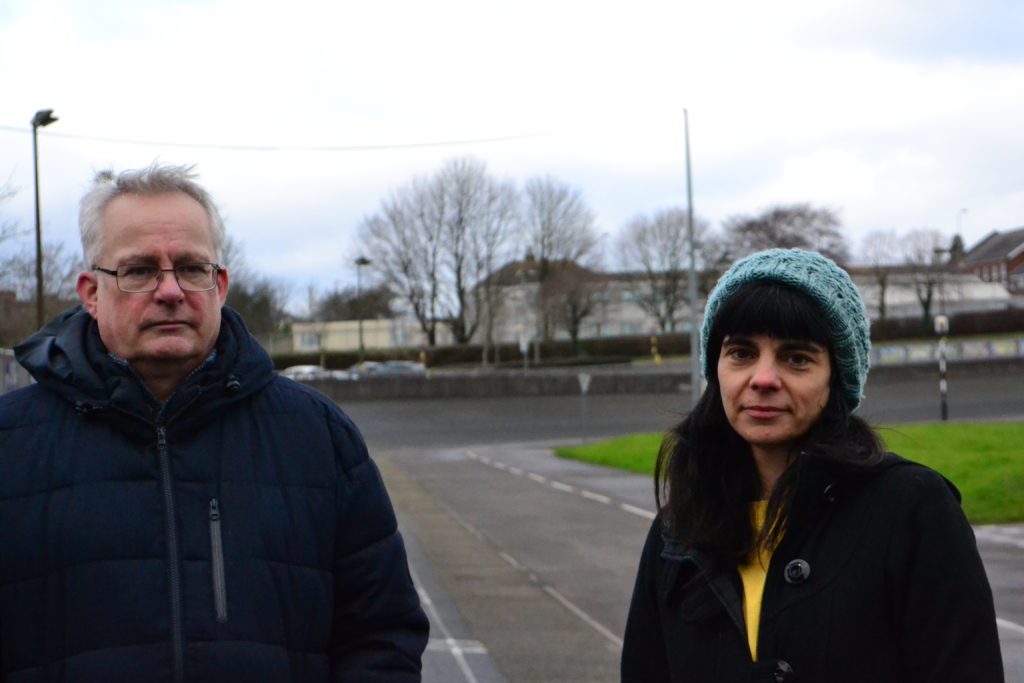
From there, Renata’s children would learn to ride their bikes on the Velodrome too, and join all those before them who would associate its track with the unforgettable moment when they first balanced on two wheels.
After that, they attended summer camps there.
“My kids would spend a week or two doing sports here that was organised by Maindy [leisure centre],” she recalls. “It was during holidays and again, you could kind of be here watching them for a bit and then go home…it was really great.”
Having a service like this, free to use or so cheap it feels free, is the dream of many modern parents. Instead of this beautifully simple arrangement, they have to battle with a modern system of various clubs and activities, varying drop off and pick up times for different ages and an ever increasing price barrier.
It may sound trivial talking about something as simple as a summer camp, but when these disappear, it only serves to emphasise how good they were and how much has been lost. Unsurprisingly, it was the children who benefited the most.
“A lot of kids ended up meeting each other,” Renata says of the camps. “Like as part of a community and stuff, all through these activities.”
On Cathays High School, which has educated both of her children, Renata says that their experience has been mostly positive and it’s a very welcoming school.
“They have lots of friends there who also live locally so it gives them a nice sense of community,” she says. “They’d complain about the buildings being very old and there is no doubt the school needs renovating, but it doesn’t need expanding.”
She is convinced, however, that the benefit to her children of having the velodrome nearby is “vastly superior” to what it would have been if it was school playing fields instead.
“This school has become more divorced from the community.”
What Andrew, Renata and others have argued for is for a kind of dual utility of the space, where a pitch is put in the middle part of the Velodrome and used by both pupils and the local community, and the cycling track retained.
“Why would you rip up a velodrome and grass to put artificial pitches in when you can retain the Velodrome and have shared facilities between the school and the community?” asks Andrew, pointing out that Velodrome usage is outside of school hours.
“This school has become more divorced from the community than other secondary schools are, or should be,” he says, echoing campaigners’ desire to bring the two together.
But the argument has so far fallen on deaf ears. When Renata put the idea to her local councillor and sent her examples of where facilities are shared elsewhere, it was rebuffed as unworkable.
The end result has been to drive a wedge between the widely held desire to keep the Velodrome and the need to maintain and upgrade the school.
From the start, the community have felt completely locked out from knowing what has been going on, let alone having any say over it.
They only found out via a small notice in a newspaper that the council were proposing to swap the land of the velodrome, which is protected for public use, with two other pieces of park area that were already open to the public anyway.
At a recent public meeting, Alan Davis, who for 20 years was head coach of the Maindy Flyers and who taught Geraint Thomas, revealed that he had written to councillors six months ago asking about the new proposed facilities, but none had responded.
“We saw Maindy turning into Better, which made it much worse.”
But this isn’t the first time that Cardiff Council have been accused of trashing sporting facilities in the name of re-development. In 1998, the Empire Pool, another legacy of the Empire and Commonwealth Games of 1958, was demolished.
Seen by many as the best public swimming pool Cardiff ever had, it was famed for a high diving board, classic mid century design and prime location in the city centre. It was used by working class kids from across the city and seared into people’s memories ever since.
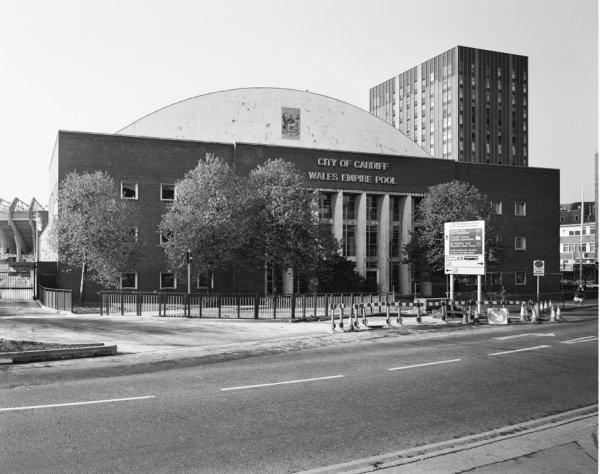
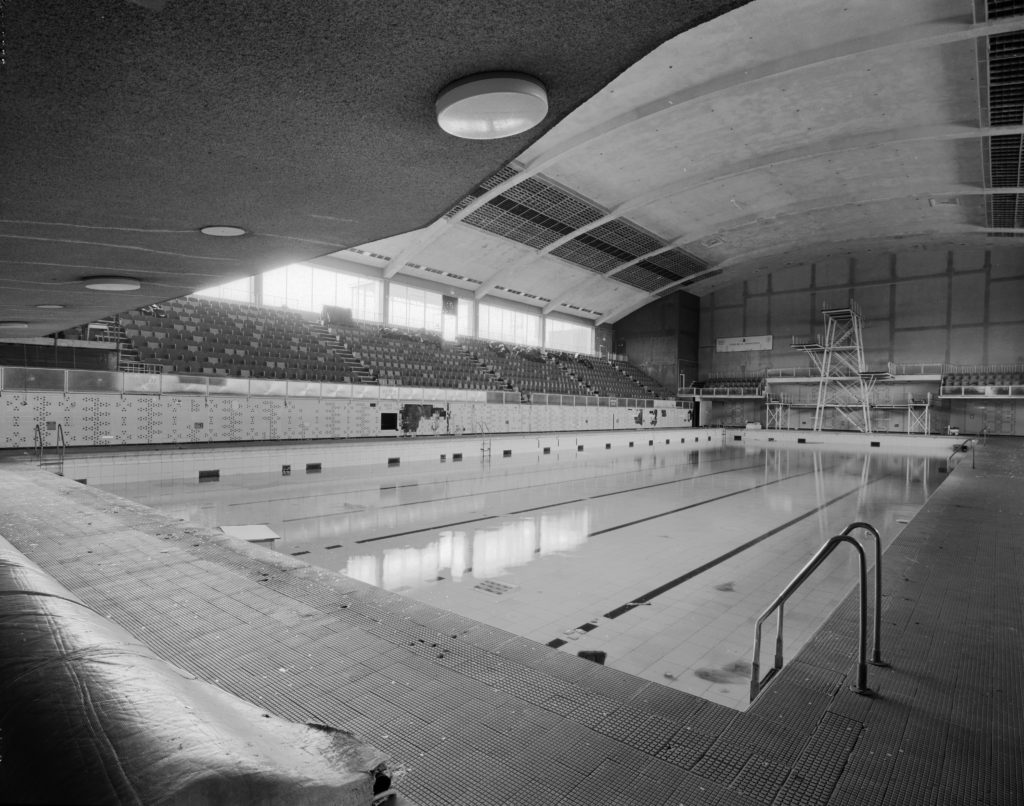
Its replacement, a 50 metre Olympic pool and adjacent fun pool with slides down in Cardiff Bay, is undoubtedly a good replacement but it has proved nowhere near as accessible and doesn’t even boast some of the same features.
As Andrew tells me in exasperation: “It took 10 years to replace the Empire pool, despite the fact that they didn’t put in the promise of a high diving board they were supposed to.”
There is a more general sense, however, of community sports facilities either being taken away altogether or allowed to disintegrate to the point of no return, where their destruction becomes almost an inevitability.
This has certainly seemed the case when it comes to the Velodrome. The actual track itself, though it looks tatty in places, isn’t actually in bad condition I’m told. It’s the surrounding area that’s falling to pieces.
After walking around the Velodrome with Andrew and Renata, we wander up to the old tennis courts above. We walk along the pathway, past two young lads minding their own business, smoking weed on a bench. This is another aspect of this space – as an important hideaway for teenagers where they’ll generally be left alone.
When we arrive at the courts, what greets us is not a playable tennis court, but a locked square concrete space in a state of total disrepair, and where one scraggly net, instead of two or three, remains.
According to Andrew and Renata, this slow, steady degradation became much more pronounced from 2016 onwards, when Better Leisure, or Greenwich Leisure Limited (GLL), took over the running of Maindy Leisure centre, along with several others in Cardiff.
At the time, Cardiff council promised that outsourcing leisure services to GLL would improve things, but people’s experience here tells a different story.
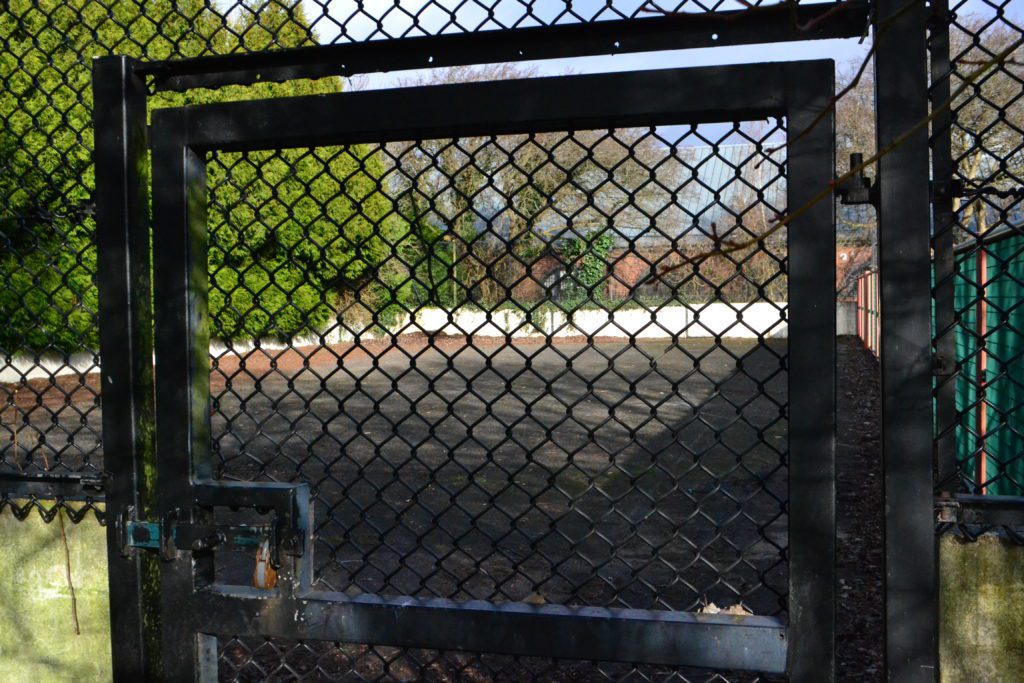
“In recent years, since GLL took over the running of the leisure centre,” says Andrew, “they padlock closed the tennis courts and allowed those to deteriorate, the exercise equipment around the outside has been allowed to deteriorate.”
“I mean, the track itself and the walls of it have deteriorated,” he continues as we move on. “When you walk around here, the pathway which is a jogging track around the outside of the Velodrome – they’ve just allowed three or four years worth of leaves to accumulate and make it really mucky.”
In a statement, GLL told voice.wales that the tennis courts were the responsibility of Cardiff Council, and that repairs to the exercise equipment – which is under GLL’s control – will be identified in the next budget. They also said they had “undertaken extensive repairs to two major faults in the walls of the Cycle Track since 2020,” as well as investing in the closed circuit and free-to-use BMX track next to it.
As a local resident, however, Renata has not been impressed with the change.
“We saw Maindy turning into Better, which made it much worse,” she says, fully aware of the pun. “Immediately, there were barriers to get in, the parking was no longer free anymore.”
She complains that you can’t even pick up the phone and speak to someone on the desk anymore. “You don’t just get a person, it’s terrible. Four out of five options on the phone tell you to go and check the website,” she says in frustration.
“The time that youth can use the gym reduced from two hours a day to something like two hours a week,” she says of her own son’s experience of trying to book a session there following the Better takeover.
GLL say that they have “centralised calls” to their “Customer Services Centre” which has a bigger capacity, and that “there has been no reduction in Junior Gym access at Maindy Centre,” adding that Gym sessions are available every weekday evening, and throughout weekends and school holidays. They also said that parking was free for members and centre users.
But Renata paints a stark picture of services being gradually lost and puts the proposed ripping up of the Velodrome firmly within this phenomenon.
“It does seem like there’s a constant attack on what communities really need to thrive, like youth centres.”
“All sorts of community facilities seem to be under attack,” she tells me. “I moved here 14 years ago, my kids were small. And I grew up using this place, using Cathays Community Centre, using the library, the swimming pool, and it’s all suddenly shrinking in terms of how much is available.”
When Andrew lists what the whole site used to be like – a grandstand & associated buildings, tennis courts, a bowling green, coupled with things like the Empire Pool – it’s impossible not to wonder how and why things have gone backwards. There’s no indication that the new velodrome will be different.
In the council’s own document, they say that as well as club cycling at the new site, they plan to operate a ‘pay to ride’ system, meaning an automatic price barrier that doesn’t currently exist at Maindy. This isn’t surprising when we learn that the council are also currently undertaking “a soft marketing exercise to explore operator options” – shorthand to say it won’t be publicly run and another provider like GLL awaits.
When the council consulted people about the Maindy Velodrome, they found that two thirds of people pay either nothing or less than £10 to regularly use it, a scenario that seems impossible in the new proposed facility.
“From about the age of one and a half, two, I was down here.”
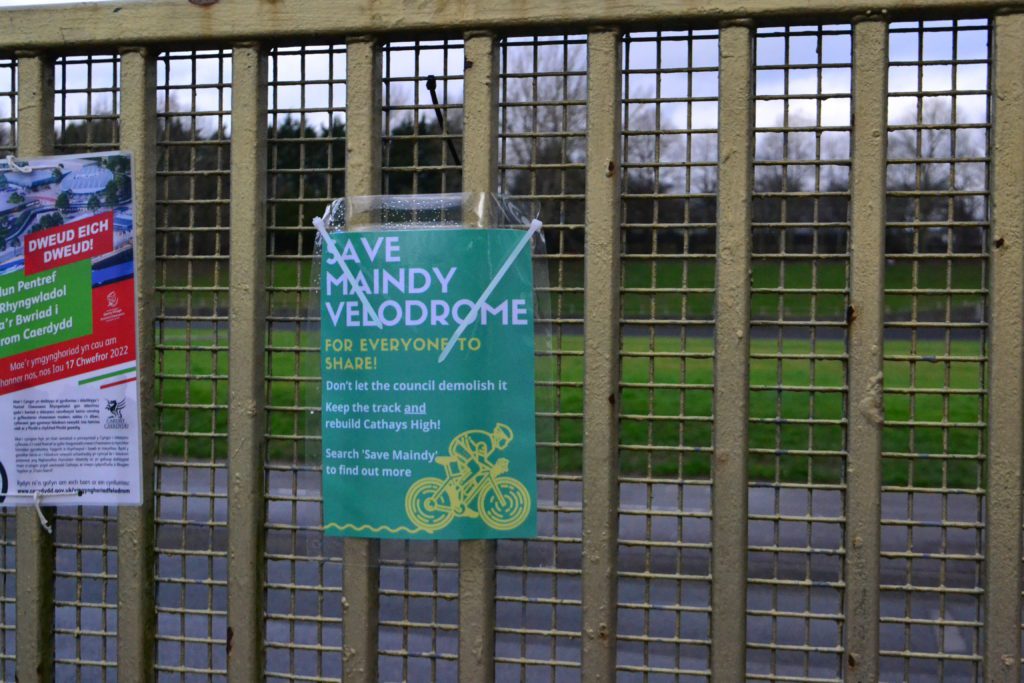
If the Velodrome goes, it’ll become another part of this collective memory and something future generations only hear about through the stories passed down. Its replacement, much like the Empire pool, swaps a community facility with one that’s far less accessible.
“This is precisely the kind of thing that local kids need,” says Renata. “Having this place where gold medalists have practised that is so open, so accessible and can come into a community.”
“In comparison,” she says of the facility it is set to be replaced by, “something that is outside the communities, is much more kind of specific, much more technical, like it’s a completely different setting.”
It all points to a move away from the free, turn up and play facilities that were once a given and towards a system of payment barriers at every turn.
This was always an inevitable effect of the austerity drive by the Tory Lib Dem coalition in 2010, where leisure services have been sold off or cut back entirely. In Wales, however, it has mostly been Labour Councils that have implemented this depressing reality.
During this time, campaigns have sprung up to defend not just sporting facilities, but all sorts of public services that are integral to communities. Often these campaigns, such as the one that saved Cardiff’s libraries from near total closure in 2015, have been most successful when they have managed to mobilise the greatest numbers of people.
Within days of news breaking that it might disappear, hundreds joined a Facebook group against its closure. Thousands have signed petitions – protests and public meetings have been held.
Andrew Wyatt is not so different to other people who have found themselves on the frontline of this assault on sporting facilities and heritage. He knows every available detail of the process, can counter every one of the council’s arguments and has been desperately trying to find something that will prove decisive in saving the velodrome.
At the basis of it all, however, exists a simple bond with the space and what it has given him and others over the years.
And whilst the creation of Olympic champions, rugby stars and one of the best cyclists in the world is important, it is the legacy that the Velodrome carries for ordinary people that almost matters the most. This is the vast majority for whom sporting stardom is never really on the cards, but who deserve and value access to facilities nonetheless.
“Personally, I’ve got a lot of history and involvement with this site through growing up within a couple of miles of it,” Andrew says, staring down at the track.
“Originally I was from the Heath, a couple of miles that way. My parents were both sports teachers, so probably from about the age of one and a half, two, I was down here when there were sports events going on, athletics events.”
“And then,” he says, turning to the next generation, “my daughter learnt to ride here.”
Now in year eleven and doing exams, she’s still a keen cyclist. “She still trains down there now with an adult cycling club,” he says, “but she also uses it recreationally…the other weekend they were skateboarding, about four or five of them.”
It is this simple access to physical activity in a public space like the Velodrome, and the easy transition between leisure and the world of serious sport, that people are trying to save.
“It’s a heritage facility that needs to be cherished and protected, not destroyed,” he pleads.
* A public consultation on the future of the Velodrome closes on 20th June and can be filled out here.
If you value our journalism, join our Patreon from just £3 now.

